1. Woolly Mammoth
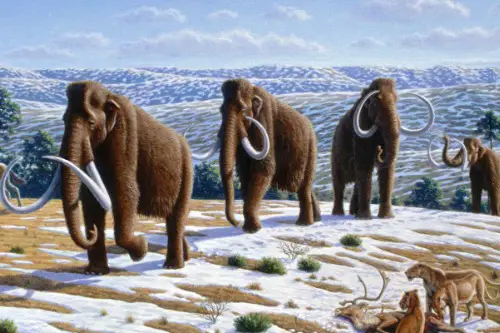
Imagine standing next to a creature that stood 13 feet tall and weighed up to 6 tons! The woolly mammoth, with its long, curved tusks and shaggy coat, was a true giant of the Ice Age. These gentle herbivores roamed the northern parts of North America, and they were well-adapted to cold environments. Their extinction is often linked to climate change and human hunting. Learning about them reminds us of the delicate balance in ecosystems.
2. Saber-Toothed Cat
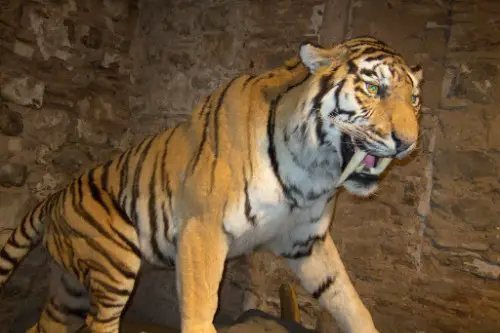
The saber-toothed cat, with its iconic long canine teeth, is perhaps one of the most famous extinct animals. This ferocious predator lived alongside mammoths and other prehistoric beasts. It was built for hunting, with strong legs and a powerful bite. The sight of these cats prowling the plains would have been both awe-inspiring and terrifying! Their disappearance is a great example of how shifts in climate and prey availability can lead to extinction.
3. Mastodon
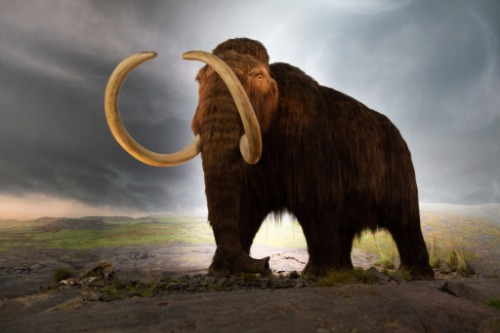
Similar in appearance to the woolly mammoth, the mastodon was a bit shorter but equally impressive. With its long, curved tusks and a more robust body, this creature roamed the forests and grasslands of North America. They played a crucial role in their ecosystems, helping to shape the landscape by foraging. Understanding their extinction teaches us about the impact of humans and environmental changes on large mammals.
4. Giant Beaver
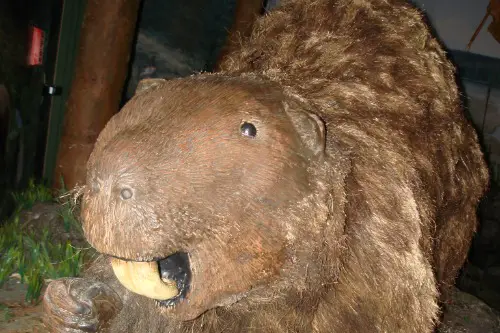
Imagine a beaver the size of a modern-day bear! The giant beaver, known scientifically as Castoroides, could grow up to 8 feet long. This remarkable rodent was primarily herbivorous and played a vital role in its ecosystem, contributing to wetland formation. The extinction of the giant beaver serves as a fascinating example of how even the most seemingly resilient species can be impacted by environmental changes and human activity.
5. Giant Ground Sloth
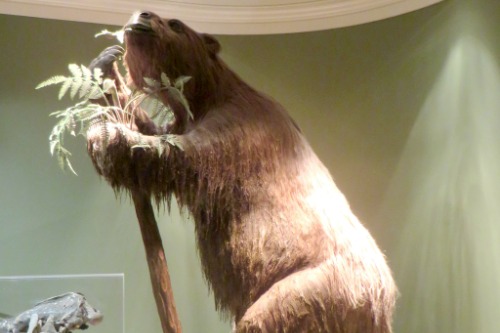
These enormous sloths, some as big as an elephant, slowly roamed the woodlands and grasslands of North America. With their massive claws and herbivorous diet, they played a unique role in their ecosystem. They are fascinating because they remind us that sloths weren’t always small and slow! The mystery surrounding their extinction adds an element of intrigue to the study of prehistoric life.
6. Steller’s Sea Cow
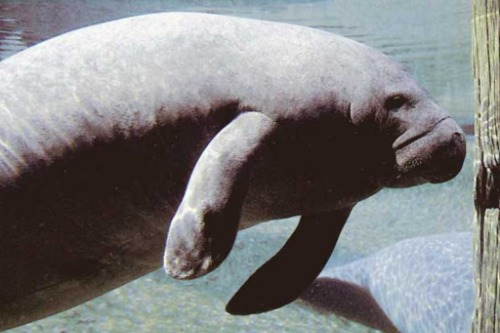
Imagine a marine giant the size of a bus! Steller’s sea cow inhabited the cold waters of the North Pacific and was a close relative of today’s manatees. These gentle giants fed on kelp and were completely harmless to humans. Sadly, they were hunted to extinction within 27 years of being discovered by Europeans. Their story emphasizes the importance of conservation and protecting vulnerable species.
7. Camelops
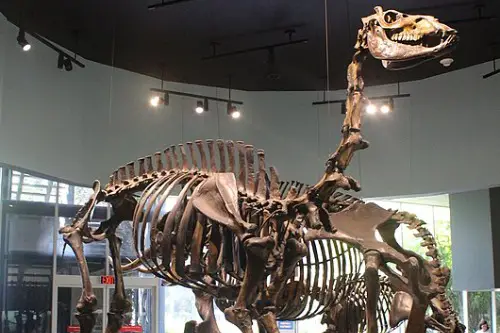
Camelops, often referred to as the “American camel,” was a large camel species that roamed North America during the Pleistocene Epoch. These creatures were quite different from the camels we see today; they were larger and adapted to the cooler climates of the time. Their extinction, likely due to climate changes and human hunting, showcases how animals can adapt to specific environments and the challenges they face when those environments shift.
8. American Cheetah

Did you know that a cheetah-like species once roamed the plains of North America? The American cheetah was built for speed and may have hunted similar prey as today’s cheetah. This fascinating creature offers a glimpse into the diverse array of predators that once existed on the continent. Its extinction highlights how competitive dynamics can shift dramatically over time.
9. Short-faced Bear
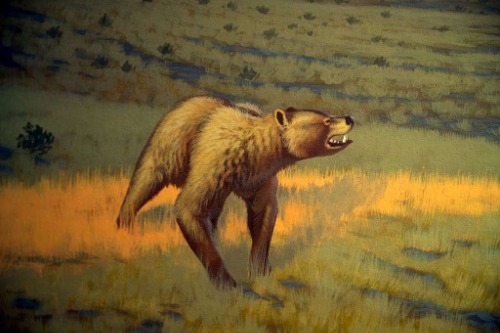
Imagine a bear that stood over 12 feet tall when on its hind legs! The short-faced bear was one of the largest bears to ever roam the Earth. It had long legs for running, allowing it to cover large distances in search of food. This magnificent creature’s disappearance is tied to climate change and the loss of habitat, providing insight into how even the mightiest can fall.
10. Haast’s Eagle
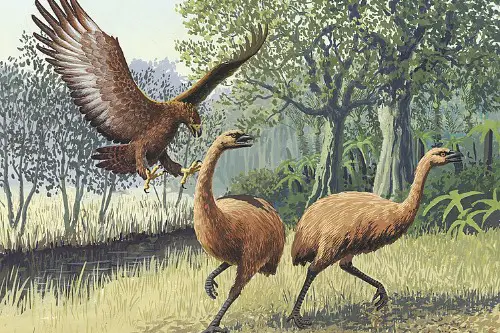
This massive eagle, which existed in New Zealand, is often included in discussions about extinct birds in America due to its resemblance to some prehistoric birds. It preyed on large flightless birds, showcasing the unique predator-prey dynamics of the time. Its extinction reminds us of the complexities of ecosystems and how the loss of one species can impact many others.
11. Dire Wolf
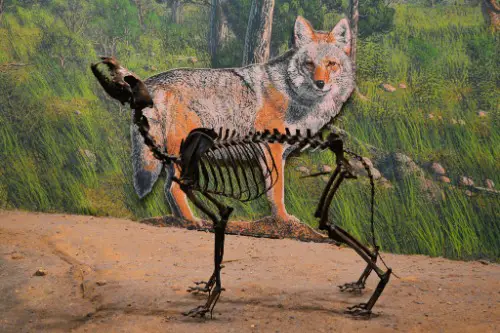
With its formidable size and pack-hunting behavior, the dire wolf has captured our imaginations, especially in popular culture. These wolves were apex predators and played a crucial role in their ecosystems. Their extinction offers insight into how environmental changes and human encroachment can lead to the decline of even the most dominant species.
12. Protoceratops
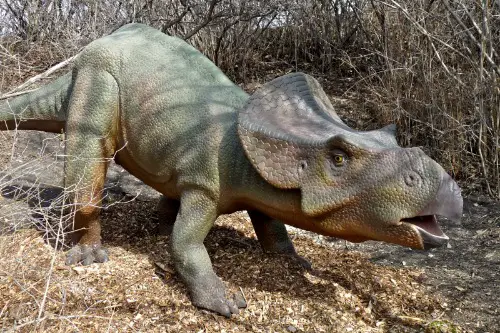
This small dinosaur, though not as famous as its larger relatives, is a significant part of North America’s prehistoric history. With its distinctive frill and beak, Protoceratops offers clues about the evolution of ceratopsians. Its story reminds us that even the smallest creatures have a place in the tapestry of life.
13. Passenger Pigeon
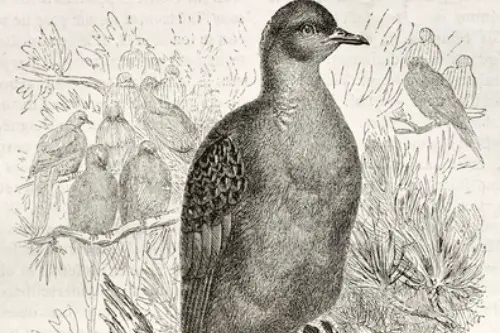
Once numbering in the billions, the passenger pigeon is a heart-wrenching tale of human impact. These birds were social and traveled in massive flocks across North America. Sadly, due to overhunting and habitat destruction, they were driven to extinction in the early 20th century. Their story serves as a powerful reminder of the need for conservation and respect for wildlife.


